The circumstances are perfect: an old sewing machine factory in the heart of the city, plenty of space and – because the walls are so thick and the area quite large – you can play here until your ears signal overload. In any case, the neighbors aren’t complaining. It’s all about the LowBeats HiFi listening room, the hub of the editorial team – in short: the heart. It is within sight, but not within earshot, of the LowBeats office in the same building complex. The former sewing machine factory was built in 1883 and the building was solid – very solid. The floors had to support heavy machinery and the walls are also extremely solid. When moving in and installing the various acoustic elements, we wore out a whole battery of expensive diamond drill bits. The room that we have set up as a LowBeats HiFi listening room has various advantages. Advantage number 1: At 68 square meters, it is large enough to accommodate really big speakers. Advantage number 2: Our neighbors are several dance studios and a food market. You can then play the big speakers really loud without seriously disturbing anyone. Advantage number 3: One long side of the room is occupied by many large windows. Acoustically, we’ve got the large glass surfaces under control and now have plenty of daylight and, if necessary, lots of air. As I have always had to go down to the cellar to test audio, video or stereo play for the last 25 years (because the listening rooms were always in the basement), I cannot appreciate this fact enough. Advantage number 4: apart from the ceiling and floor, there are no parallel walls in this room and therefore fewer disturbing room resonances.
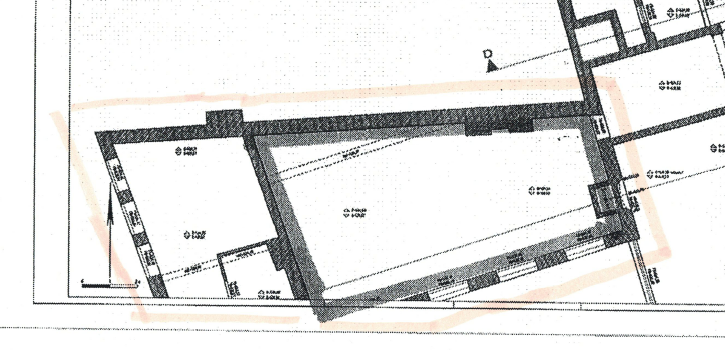
We thought. But it wasn’t true. Acoustics professional Farshid Shahlawandian from RTFS(Raumakustik Tools Farshid Shahlawandian) frowned at the very first inspection and dampened my enthusiasm for the asymmetry of the room. He was proven right. In asymmetrical rooms such as this one, the resonance frequencies do not lie on top of each other as is often the case in rectangular rooms (and thus add up in their effect), but there are many different booming frequencies.
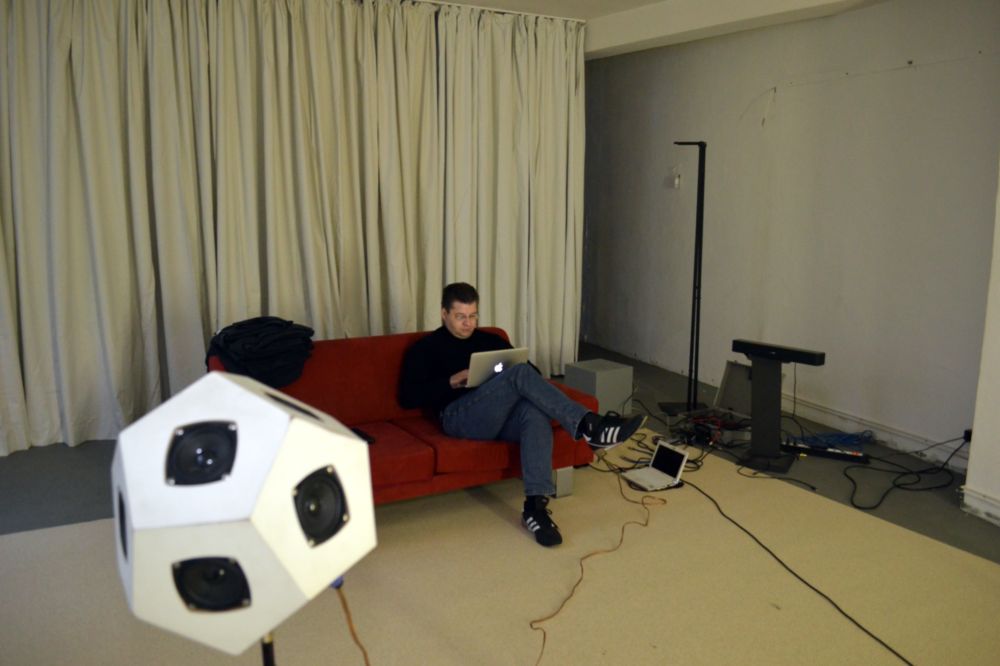
This was also the case in the LowBeats HiFi listening room. In the range between 50 – 60 Hertz alone, we had three unpleasant interference resonances. We used a total of seven Helmholtz resonators to contain the bass resonances by setting up a Helmholtz resonator for each stronger resonance. The elongated Helmholtz mounted transversely under the ceiling, for example, is tuned to the dominant 26 hertz resonance.
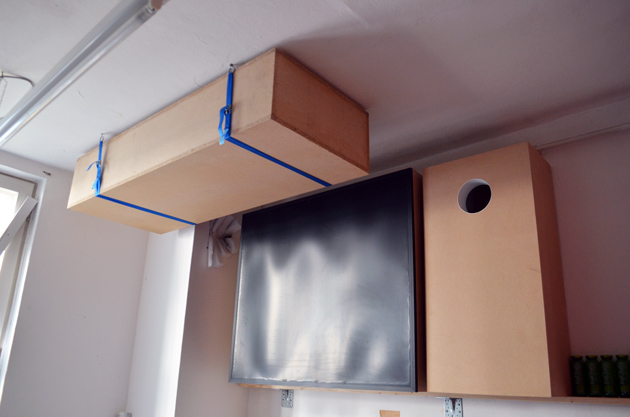
I already discussed the problems with the reverberation time in the setup article LowBeats HiFi listening room phase 2 described. But after the measures with the Helmholtz resonators, the listening room also became so “dry” in the bass that we were able to make the recordings for the LowBeats Sound Oracle can be made here.
To create an acoustically good room climate in the mid-high range, RTFS boss Shahlawandian has developed a coherent combination of diffusers and absorbers. The focus is on the permanently installed, sound-reflecting wall with 18 Sirrah diffusers as well as two equally sound-reflecting side elements to the left and right of it. These movable elements each have a reflective and an absorbent side (image). Depending on whether you place these elements behind or next to the speakers, and whether the reflective rear or the absorbing front faces forwards, you can simulate different room situations. Very small speakers, for example, always need the elements at their back – with the reflective side to the front.
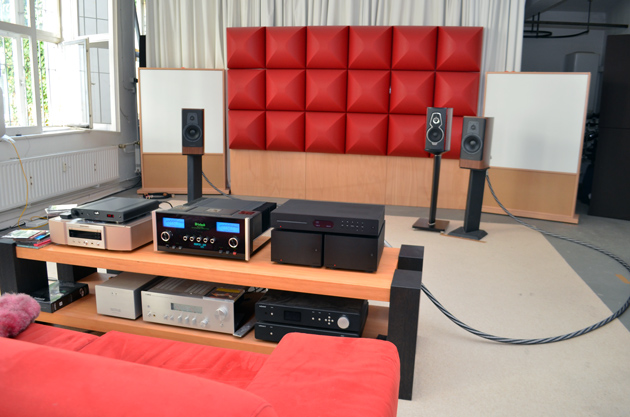
The window front and the opposite wall are only fitted with diffusers at one critical point each. We have placed a whole wall of diffusers behind the listening position; this keeps the sound lively. In the past, people liked to turn one side of the listening room – either behind the speakers or behind the listening position – into a complete “dead end” with absorbers. Today, this has been abandoned and it didn’t make sense for LowBeats either, because hardly any “normal” music listener has such a situation at home.
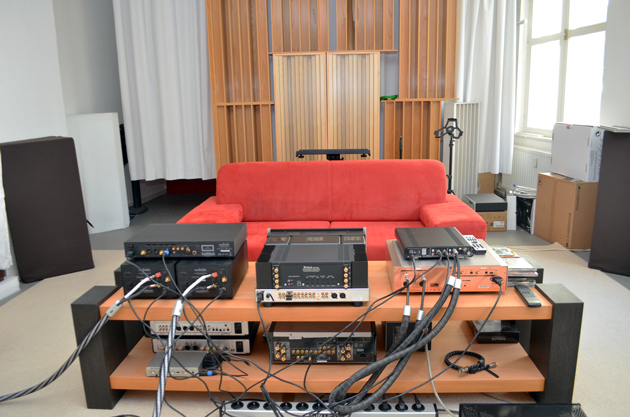
The planning sketch from RTFS gives a very good overview of the acoustic measures in the LowBeats HiFi listening room.
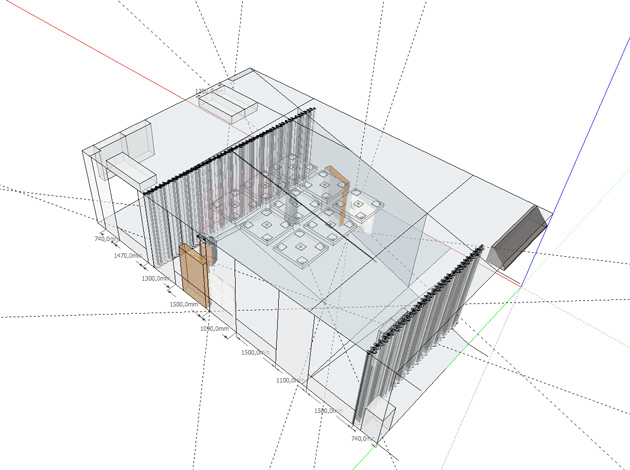
The five boxes at the top left are Helmholtz resonators. Two heavy, rubberized curtains (black lines) limit the large room in the mid-high range to around 40 square meters. Batteries of diffusers are fitted in front of both curtains. The speakers are positioned between the two movable panels (brown), with the sofa opposite just under a meter in front of the diffuser wall. Absorption takes place exclusively via nine square ceiling absorbers, various edge absorbers in the corners of the room and a low-pile carpet measuring around 30 square meters. This ensures that sufficient energy is retained.
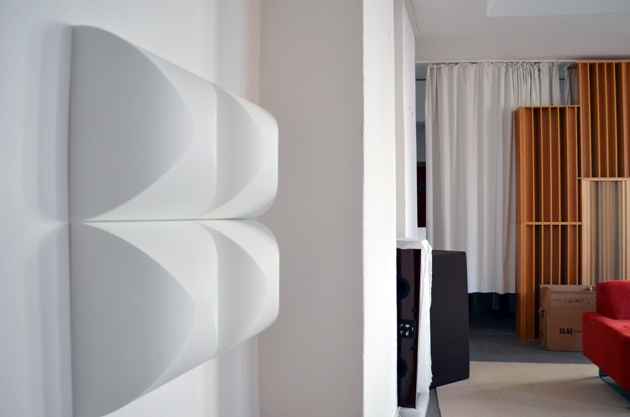
With all these measures we achieve a continuous reverberation time above 200 Hertz of 0.25 seconds; even in the bass we were able to reduce it from almost 2 seconds to 0.6 seconds thanks to the RTFS measures. This is very good and enables us to hear differences in the test subjects quickly and very accurately. And because RTFS boss Farshid Shahlawandian is a really great expert when it comes to diffusers and the like, the spatial imaging in the LowBeats HiFi listening room is also overwhelmingly vivid – if the components are up to it. In any case, it’s always fun to listen here. Not only because it sounds so good here, but also because the atmosphere of this room and this building always invites you to linger. Here you can compare the sound of the speakers and soundbars tested by LowBeats and recorded in the hi-fi listening room at the click of a mouse:
Understand listening tests in the LowBeats sound oracle
And here we test everything about home theater:
Conversion of the LowBeats test theater: More Atmos despite Auro
More information about our test methods:
The multitone speaker measurement method at LowBeats
The pickup measurement procedure at LowBeats


